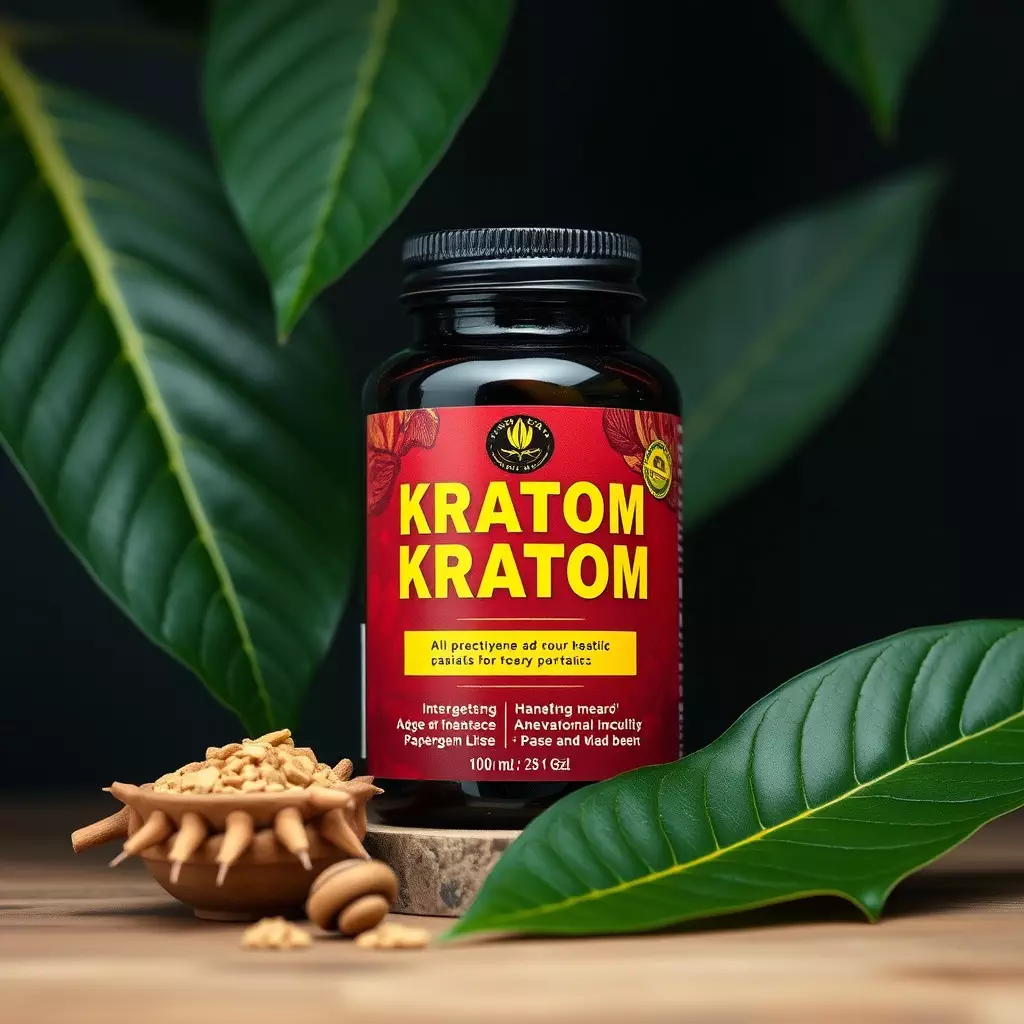Kratom, a derivative from the Mitragyna speciosa tree, can significantly enhance athletic training recovery by reducing muscle soreness and fatigue while promoting better sleep and accelerating muscle healing. Its active alkaloids, like mitragynine and 7-hydroxymitragynine, offer stimulating and analgesic effects that are beneficial for athletes. To maximize these benefits, it's essential to use kratom judiciously within a multifaceted recovery strategy that includes proper nutrition, hydration, and rest. Athletes should start with a low dosage to understand their sensitivity and consider consulting healthcare professionals due to potential interactions with other medications. The timing of intake is critical, with kratom best taken before training for energy and focus, and after for pain relief and relaxation. Personalization is key, as effects can vary among individuals. Adhering to local regulations and regularly monitoring one's response will ensure safe and effective use, leading to improved recovery and enhanced athletic performance. This approach emphasizes the importance of a tailored and informed application of kratom in an athlete's training regimen for recovery.
Exploring the multifaceted relationship between athletic performance and recovery, this article delves into the emerging role of kratom coaching in optimizing post-training recuperation. Unveiling the potential benefits for athletes, we examine how strategic integration of kratom can enhance training recovery. From understanding optimal dosage and timing to crafting a personalized recovery protocol, readers will gain insights on leveraging this natural substance effectively within their routine. Join us as we explore the nuances of kratom’s influence on athletic recovery, ensuring peak performance and resilience against injury.
- Unlocking Athletic Potential: The Role of Kratom in Training Recovery
- Strategies for Integrating Kratom into Your Post-Training Routine
- Navigating Kratom Dosage and Timing for Optimal Recovery Effects in Athletes
Unlocking Athletic Potential: The Role of Kratom in Training Recovery

Incorporating kratom into an athletic training regimen can significantly enhance recovery, a pivotal aspect of unlocking an athlete’s full potential. Kratom, derived from the leaves of the Mitragyna speciosa tree, has been traditionally used for its stimulating and analgesic properties. When strategically employed in a recovery protocol, kratom can aid in mitigating muscle soreness and fatigue that often accompany intense training sessions. Its alkaloid content, particularly mitragynine and 7-hydroxymitragynine, plays a role in modulating pain reception and promoting relaxation, which are crucial for effective recovery. Athletes recovering with kratom may experience improved sleep quality, reduced inflammation, and accelerated muscle repair, all of which contribute to faster overall recuperation times. This not only allows for safer progression in training but also enables athletes to reach peak performance levels more rapidly, capitalizing on the full spectrum of their capabilities.
To harness the benefits of kratom effectively in training recovery, it’s essential to approach its use with a nuanced understanding and appropriate dosing. Coaches trained in kratom’s properties can guide athletes through this process, ensuring that its inclusion complements the athlete’s overall health and fitness goals. Regular monitoring and personalization of kratom usage are key to optimizing its effects for recovery. By integrating kratom into a comprehensive recovery strategy, which includes proper nutrition, hydration, and rest, athletes can enhance their performance and maintain a high level of activity without overtraining or risking injury. This holistic approach to training recovery with kratom underscores the importance of a balanced and informed perspective on its application within athletic contexts.
Strategies for Integrating Kratom into Your Post-Training Routine

Integrating kratom into a post-training routine can be a nuanced process that requires careful consideration of individual responses and local regulations. Kratom, a plant-based alkaloid, has been traditionally used in certain cultures for its potential pain-relieving and mood-enhancing effects, which can be beneficial in the context of athletic recovery. For athletes seeking to optimize their training recovery with kratom, it’s crucial to start with a low dosage to gauge individual sensitivity and effect. The most commonly used strains for post-training recovery are the red and green vein varieties, known for their relaxing and analgesic properties. These strains can help alleviate muscle soreness and promote a sense of well-being, which is essential for effective recovery.
Athletes should consider incorporating kratom into their routine after intense training sessions or competitions, when the body is in most need of repair. It’s advisable to consult with a healthcare provider before integrating kratom into your regimen, as interactions with other medications or individual health conditions may necessitate caution. Additionally, the timing of kratom intake should be optimized for personal recovery needs; some athletes may find relief when taken shortly after training, while others might benefit from consuming it later in the recovery process. Monitoring one’s response and adjusting the dosage and timing accordingly will help tailor the use of kratom to each athlete’s unique recovery profile. By doing so, athletes can potentially enhance their recovery and prepare their bodies for the next training session or competition with greater efficacy.
Navigating Kratom Dosage and Timing for Optimal Recovery Effects in Athletes

Incorporating kratom into an athletic regimen for enhanced training recovery requires a nuanced approach to dosage and timing. Kratom, derived from the Mitragyna speciosa tree, has been traditionally used for its stimulating and analgesic properties, which can be beneficial for athletes seeking to mitigate pain and fatigue. To optimize recovery effects, it’s crucial for athletes to find their personal sweet spot in terms of dosage; typically, a lower dose is recommended for energy and focus, while a higher dose may aid in pain relief and relaxation. The timing of kratom intake is equally significant; consuming it before or after training can influence its effects on muscle soreness and recovery rates. Athletes should consider administering kratom at least 30 minutes prior to intense activity to allow for optimal absorption and energy levels. Post-training consumption, particularly before sleep, may enhance the body’s natural repair mechanisms and improve overall restorative processes. It’s essential to adhere to recommended guidelines and to consult with a healthcare professional or a kratom coach who is knowledgeable in this area to tailor dosage to individual needs, as individual sensitivity to kratom can vary significantly. Additionally, monitoring the body’s response to kratom and adjusting intake accordingly will contribute to safe and effective training recovery with kratom. With careful consideration of these factors, athletes can leverage the unique properties of kratom to support their recovery and enhance performance outcomes.
Incorporating kratom into athletic training recovery regimens can significantly enhance performance and well-being. This article has outlined the multifaceted benefits of kratom, from its role in pain management to its contribution to improved sleep quality. By understanding how to integrate kratom into post-training routines and adhering to precise dosage and timing recommendations, athletes can optimize their recovery processes. It’s clear that with responsible use and professional guidance, kratom coaching can be a valuable asset in the athletic realm. Athletes looking to harness the potential of kratom for training recovery should consult with healthcare providers and consider personalized coaching to navigate its effects safely and effectively. As the evidence surrounding kratom continues to evolve, staying informed and adapting to new insights will be key for those seeking to leverage this unique compound in their athletic pursuits.






